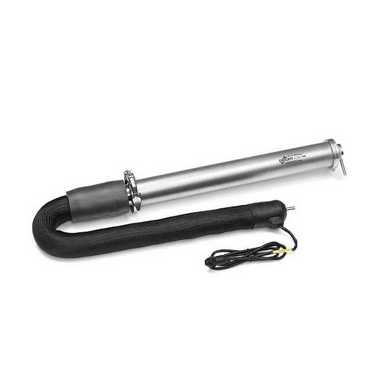I am interested in this product
Close Form

Dekati® Thermodenuder removes volatile and semi volatile compounds from aerosol sample. These volatile compounds may cause variability in particle size distribution and concentration measurements via nucleation and condensation. It is commonly used in e.g. engine exhaust measurements to remove these effects and to ensure repeatable and reliable results. The Thermodenuder is especially suitable for use with the Dekati® ELPI®+ (Electrical Low Pressure Impactor) products but it can be used with any measurement device with a suitable flow rate.
I am interested in this product
Close Form
Downloads
Detailed Specs
The Dekati® Thermodenuder consists of an aerosol heater and active carbon absorber section. The heater section vaporizers volatile compounds when the aerosol sample enters the instrument. After the heater section, the sample enters the absorber which absorbs these vaporized compounds in active charcoal. Cooling air or water is applied around the absorber section to decrease the sample temperature at the Dekati® Thermodenuder outlet to ambient level. The Dekati® Thermodenuder can thus be effectively used in a combination with any other Dekati® Dilution or real-time measurement device. The Dekati® Thermodenuder does not dilute the sample. The EURO5b/6 emission standard includes a requirement to measure number concentration of the exhaust particles. The measurement method described in the EURO5b/6 consists of a Volatile Particle Remover (VPR) to condition the sample and a Particle Number Counter (PNC) to measure particle number concentration by single particle counting using a Condensation Particle Counter. In order to make the particle number concentration measurement as reproducible as possible, only solid particles larger than 23 nm are measured and therefore volatile secondary particles are excluded from the measurement. This is achieved by using a well defined sample conditioning technique, the VPR. In the VPR method, the particle sample is extracted from a CVS-tunnel into the VPR system where the sample is diluted and conditioned to remove volatile matter from the exhaust sample. The sample is first led to a heated particle number diluter (PND1) where the sample is diluted by a factor of at least 10. After the PND1, the sample is further heated in an evaporation tube (ET) to a temperature above 300 °C to make sure all volatile matter has evaporated. After this thermal conditioning, the sample is again diluted in the secondary particle number diluter (PND2) to reduce the particle concentration along with the temperature to a suitable level for a Condensation Particle Counter.


